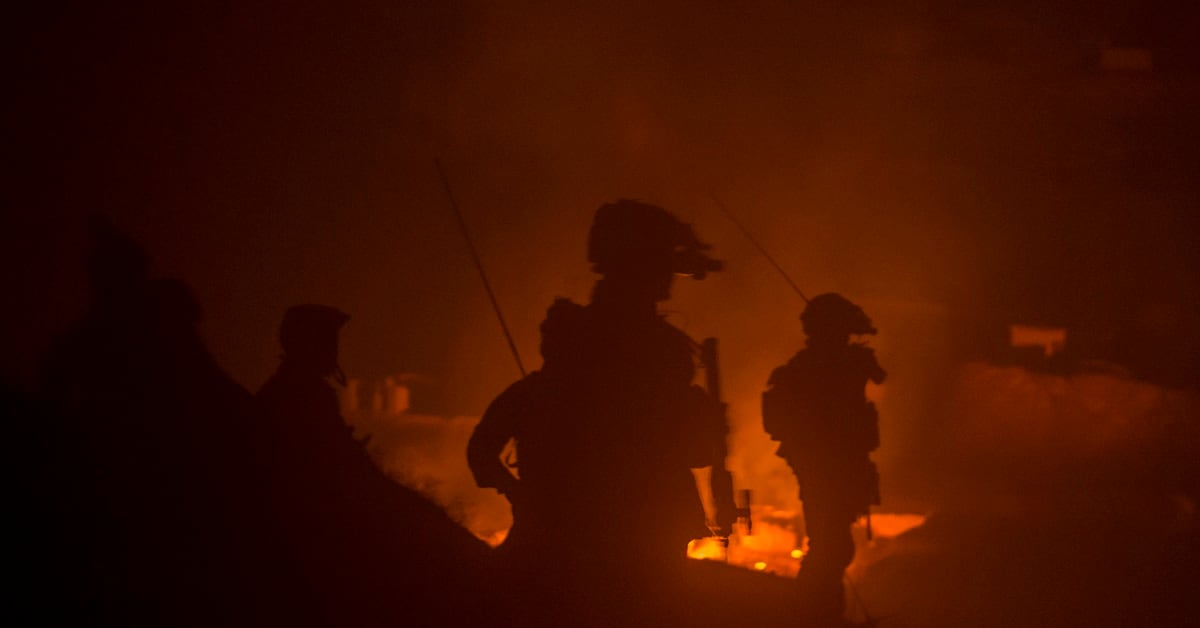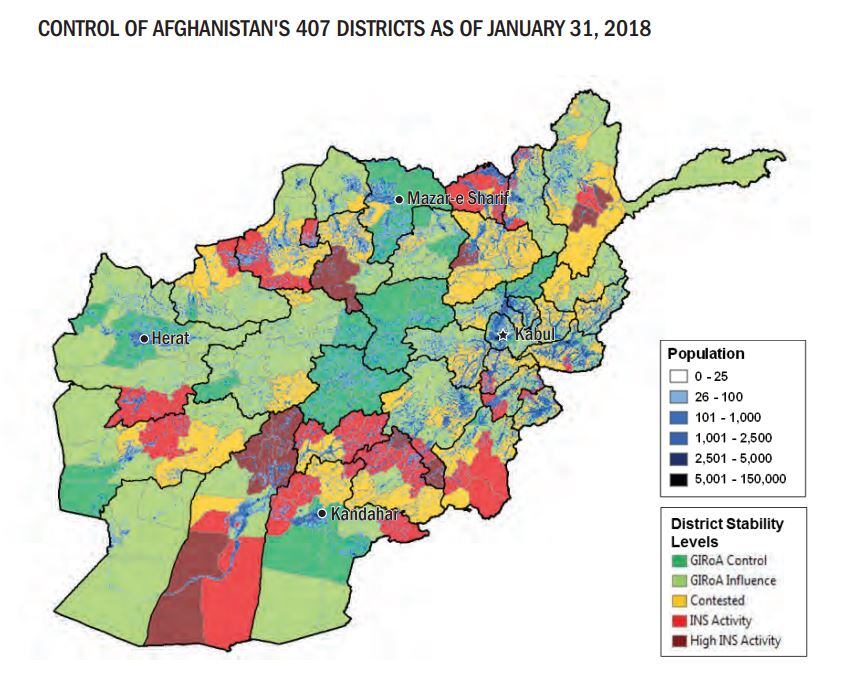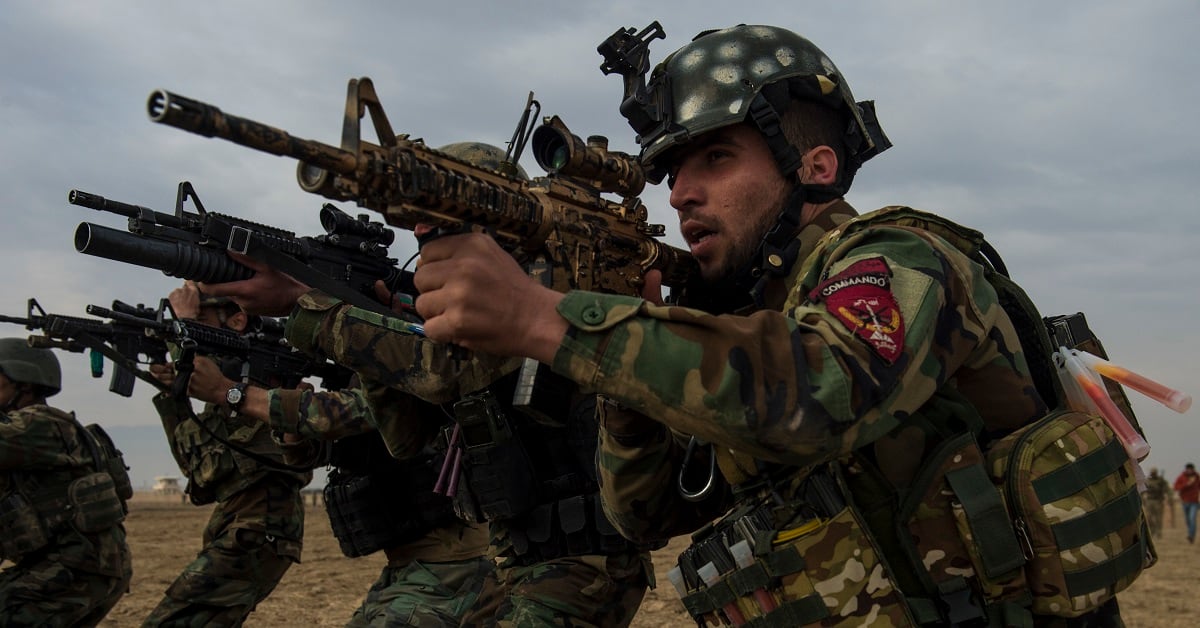Editor’s note: This story has been updated to reflect a supplement to SIGAR’s 39th Quarterly Report to Congress.
In Afghanistan, the insurgency’s control over districts remains at its highest level since the Special Inspector General for Afghanistan Reconstruction, or SIGAR, began receiving district control data in November 2015.
That insurgency encompasses all illegitimate forces, including the Islamic State’s Afghan offshoot and the Taliban, a SIGAR official said.
Meanwhile, the UN-backed Afghan government’s control over districts is at its second-lowest level, according to SIGAR’s new quarterly report.
The stalemate over the country may not bode well for U.S. and Afghan officials hoping to broker a political settlement with the Taliban.
In 2017, 11 U.S. troops were killed and another 102 were wounded in the country. This is a slight increase from the 10 U.S. troops killed in 2015 and nine killed in 2016, but a significant increase in the number of wounded from both 2015 and 2016, which was 75 and 71, respectively, according to the SIGAR report.
According to the Defense Casualty Analysis System, two U.S. military members were killed and 22 were wounded in Afghanistan so far in 2018.
At the close of January, insurgents control or influence over 14 percent of the country’s 407 districts, while the Afghan government controls or influences roughly 56 percent. The rest of the districts remain contested, according to SIGAR.
A spokesperson for Resolute Support told Military Times that SIGAR’s report reflects only “a negligible increase in security incidents from 2016,” while still showing “modest improvements to Afghan government control.”
“Challenges exist, but Resolute Support is committed to overcoming them and seizing the opportunities associated with the lowering of the Taliban's ambitions,” the spokesperson added.
The provinces with the largest percentages of insurgent controlled or influenced districts are Uruzgan, Kunduz and Helmand, U.S. forces in Afghanistan reported.
RELATED

SIGAR also measures government influence by looking at control over the Afghan people, not just their land. The watchdog agency wrote that the “overall trend for the insurgency is rising control over the population.”
SIGAR began receiving population data in August 2016, when insurgency control was around 9 percent. In January 2018, the insurgency’s population control was found to be 12 percent.
The government’s goal is to control or influence territory in which 80 percent of the 32.5 million Afghan people live within the next year and a half. Currently, the government controls about 65 percent of the population. That number is up 1 percent from last quarter, according to SIGAR.
In addition to the back-and-forth over control, SIGAR wrote that Afghan security forces, which include the Afghan National Defense and Security Forces, have suffered “a sharp decline in strength.”

Afghan security forces saw a 17,980-person decrease in January 2018 compared to January 2017.
The sharp decrease was not attributed to any single cause in the report. But U.S. officials classified the levels of casualties Afghan security forces have sustained this quarter.
Still, the report’s findings didn’t seem to discourage Pentagon leadership.
“We’ll stand by the Afghan people. We’ll stand by the Afghan government. And the NATO mission will continue, as we drive them [Taliban] to a political settlement,” Defense Secretary Jim Mattis told reporters when asked about SIGAR’s findings.
To measure district control, the assessment looks at the government’s ability “to assert its sovereignty within direct sight of the people, deliver public services like health and education, provide policing, and — hopefully — operate the instruments of governance,” according to SIGAR’s report.
Population control is also important to look at, because “controlling one district with a large population might be more important than controlling three with only a few, scattered villages.”
RELATED

“On the other hand, a government might have statistically verified control of every district within its borders; but if, say, 33 [percent] of the population were disaffected or actively supportive of insurgents, that government could still face a critical threat to its viability,” the report reads.
As of March 2018, there were roughly 14,000 U.S. military personnel serving in Afghanistan as part of Operation Freedom’s Sentinel, according to U.S. officials cited in SIGAR’s report. Approximately 7,800 of these troops are assigned to NATO’s Resolute Support mission to train, advise and assist Afghan security forces — an increase of 400 personnel since last quarter due to the deployment of the U.S. Army Security Force Assistance Brigade, or SFAB, to the country.
The other U.S. troops in Afghanistan participate in air operations, train the Afghan special operations forces, and conduct counter-terror and counter-narcotics operations.
Kyle Rempfer was an editor and reporter who has covered combat operations, criminal cases, foreign military assistance and training accidents. Before entering journalism, Kyle served in U.S. Air Force Special Tactics and deployed in 2014 to Paktika Province, Afghanistan, and Baghdad, Iraq.





